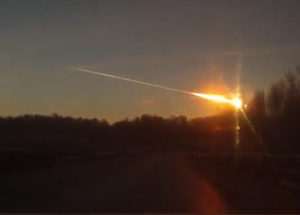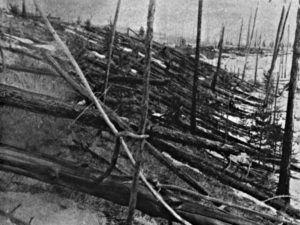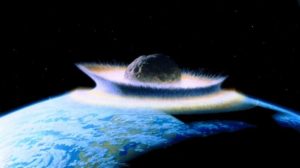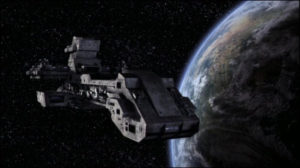Back in October I wrote a piece discussing the next generation of space exploration. Specifically human crewed exploration, and the shift from public to private sector missions and advancement. I had hope to write a follow-up piece later that month on where, perhaps, the government could continue to provide needed leadership and support. Life, and politics, got the better of me, as the November Shocker approached. But I have come back around, and here is part II of that work. So where is the focus that government can look at?
Space Monitoring, Security and Defense.
This last Monday at about 0747 in the morning, an asteroid upwards of 111 feet in diameter whizzed past the Earth at roughly half the distance to the Moon. We only discovered it on Saturday.
In June of 2014 a 1210 foot in diameter asteroid flew by about three times the distance to the Moon, another close shave. That asteroid was only discovered two months prior to its close approach.


Impact events have caused or enhanced mass extinctions in the past. While none of the above incidents would be a planet killer if they had impacted on the surface of Earth, they would be deadly. That 1200+ footer could easily have destroyed a large metropolitan area, for example. An inbound comet, with velocities much higher than most asteroids, could be even worse. And yet this is a threat that we can today, with technology that we either have or could build if we wanted to, mitigate and even eliminate.
There are space borne and ground based optical (and other wavelength) networks currently scanning the skies for inbound objects. But they aren’t running 24/7, as the majority of the scopes watching have different primary missions or are time shared research instruments. If we saw something far enough out, maybe a few years or more, with current technology we might able to stage a deflection or destruction mission. Orbital mechanics being what they are, a very tiny nudge can mean life or death if executed far enough in advance. Such a mission would essentially boil down to landing a few engines on the surface of an asteroid or comet and executing a sustained burn. A few pounds of thrust now might mean a hit turns into a near miss in several years. As mentioned, however, those observation networks are part time and don’t see all sectors of sky at all times. The chance of a big rock sneaking in close does exist.

We have nukes. Per the International Campaign to Abolish Nuclear Weapons, nine countries possess 15,000 or so warheads on the planet at present count, a number likely to go up as the new administration and Russia square off in a new arms race. Considering that most scientists estimate that only 1,000 or so would be needed to effectively end our race, and most of the current life on Earth, 15,000 seems a little excessive. But maybe we shouldn’t get rid of all of them. As the most potent weapon our species currently has, maintaining a small stock for planetary defense makes a certain amount of sense. If a killer asteroid or comet was inbound, and we didn’t have time to push it’s trajectory out of our way, we might have no other options but to try and blow it up.
Depending on the composition of the asteroid, a nuclear explosion (or several) might not make much of an impact on it or slow it down much. Or they might fracture the incoming rock so that one huge impactor now becomes several still rather large impactors. It would not be an easy decision for world leaders to make. Exchange a continent or several countries for the world, perhaps? It is a decision that we might someday have to make, however, which begs the question, are we equipped to even plan for the event and render a decision like that, if needed?
Yes and no.
The United Nations has an Office for Outer Space Affairs. They have put some time and money into studying defense against impactors. NASA actually has an office of Planetary Defense Coordination, which rolls a bunch of U.S. efforts such as the JPL Near Earth Object Program under it’s canopy. B612 is a private organization dedicated towards raising awareness and developing technology to detect incoming threats. And Planetary Resources, founded by Eric. C. Anderson and Peter Diamandis, also has skin in the game, looking to launch a network of space telescopes dedicated to scanning the skies for near earth asteroids.
So while there are agencies (and numerous educational and research institutions) on the watch, again, we don’t watch all the sky, all the time. We should be. It’s worth any expense. At least, say…5% of our country’s annual budget. Further development of technology for detecting and deflecting asteroids and comets should be a top five priority for the world.
The United States is uniquely poised to take a lead role in this mandate. We have NASA already setting up the basic framework for a united Planetary Defense force. We have top notch (if underfunded) academic institutions and research facilities. We have an overfunded defense industry that could easily convert to spaceship and space station construction. And, perhaps most important, we have the U.S. Air Force and the U.S. Navy. Yeah, you know where I am going with this one. The Air Force has top notch space technicians already, and of course the largest corps of professional ace pilots. The Navy is well prepared for a space lifestyle, living in close quarters for long periods of time, and could run a fleet of orbital defense platforms. And both services have a long history in the astronaut program, and numerous science experts.
Of course, we need help not only with defense against big rocks that come our way. That same technology for detecting and diverting asteroids will help unlock riches that could result in the world’s first trillionaires. Bring an asteroid into stable Earth orbit and you have more than a new, small moon for us to look at every night. You have a mine choke full of rare minerals and metals. Trillions of dollars may be understating it. Industry will move to both orbital space, the Moon, and eventually beyond. It is not a question of if, but when.
Being who we are, it is likely we’ll bring some of our vices with us when we expand into the Solar System. We’ll need some cops. And while our military is prevented from performing police duties here on Earth, a Space Defense Force could easily be designed with police powers out there.
And then, of course, there is the great beyond. Both the Navy and the Air Force have the heritage to form the basis for a new, quasi-civilian, organization dedicated towards exploring the outer Solar System and the regions beyond. Eventually, we will leave even the Solar System behind.

All we need is the desire. And a little more cash. The U.S. again can lead the way. Restore NASA funding to Apollo-era percentages. Press Russia, China and other space leaders towards joining in the effort, possibly under a U.N. flag, and later, an Earth flag. We fell behind in our journey, and consequently jeopardized our very existence, over the last few decades. But it is never too late to get back in the game and catch up.

